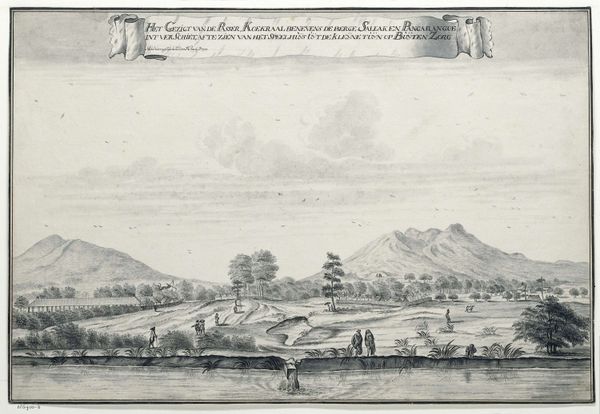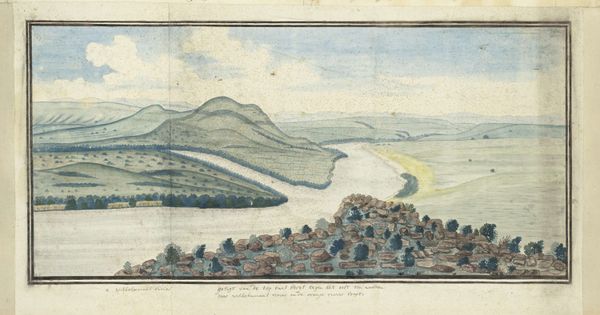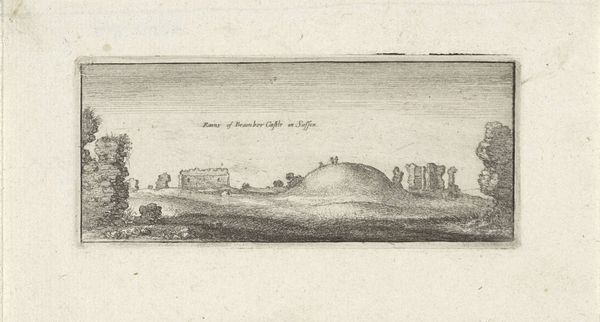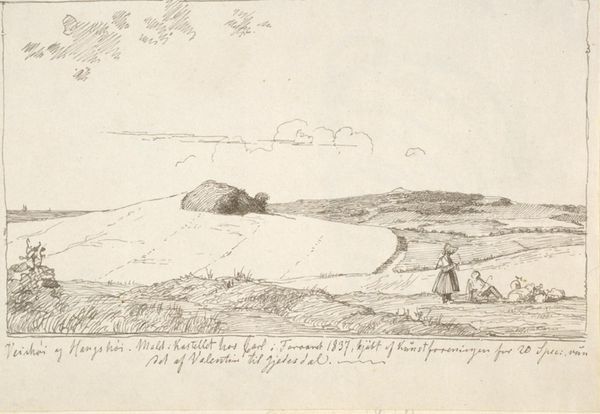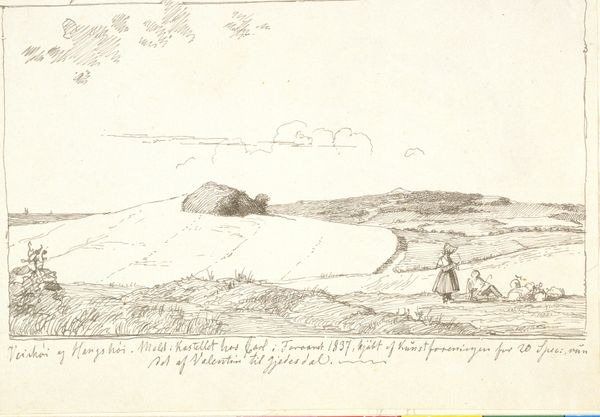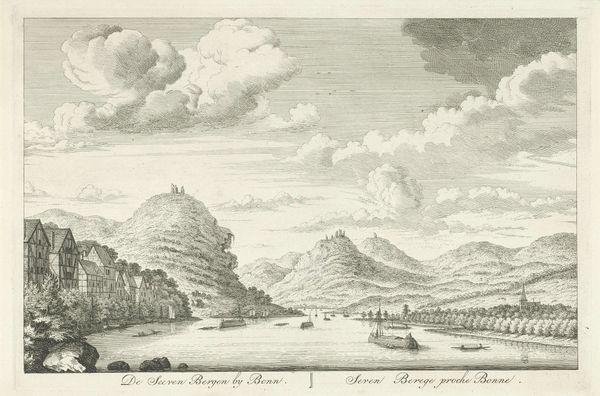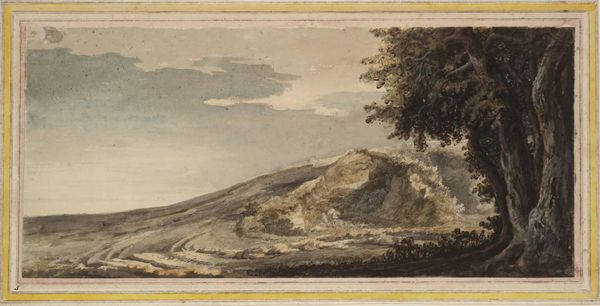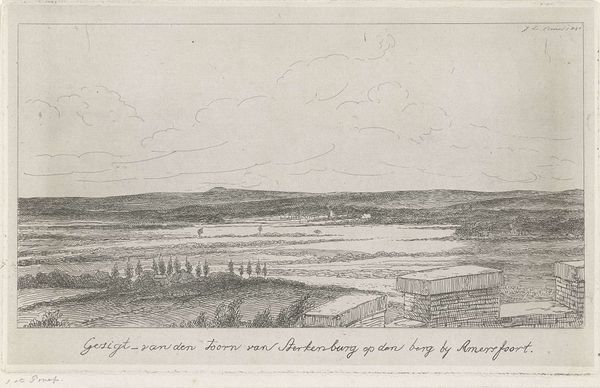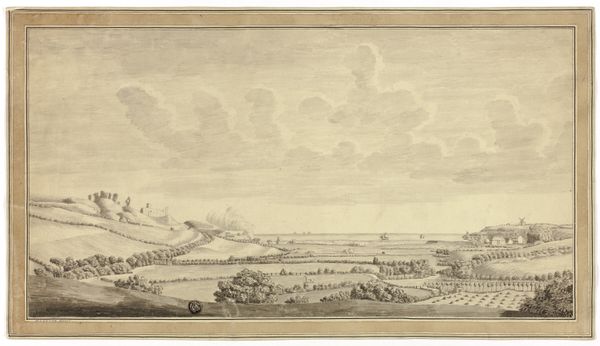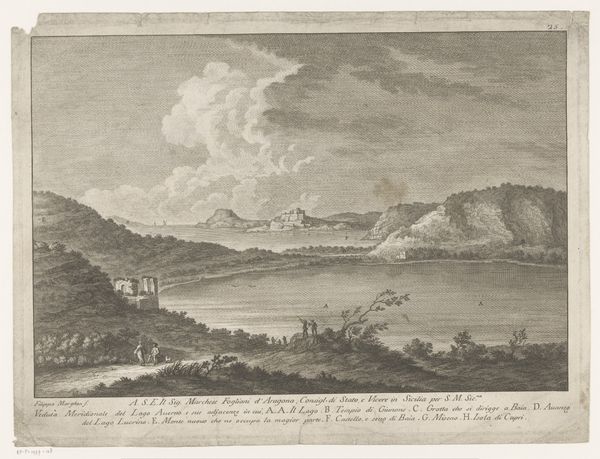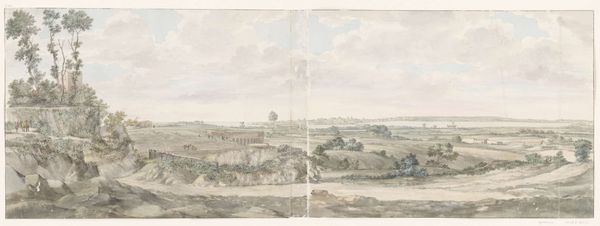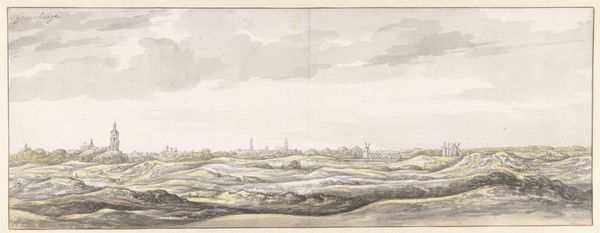
Panorama of Camdbo and the Sneeuberg Mountains, see from Bruintjeshoogte 1777
0:00
0:00
Dimensions: height 185 mm, width 735 mm
Copyright: Rijks Museum: Open Domain
Curator: What we see before us is Robert Jacob Gordon's watercolor, "Panorama of Camdbo and the Sneeuberg Mountains, seen from Bruintjeshoogte," created in 1777. There's a palpable sense of openness here. What are your initial thoughts? Editor: I'm struck by the tranquility and the almost overwhelming vastness of the landscape. It feels like a Romantic celebration of nature's power. What stands out to you most about this piece? Curator: Beyond the immediate aesthetic appeal, I see this work as deeply embedded in the context of colonial exploration. Gordon, a military man working for the Dutch East India Company, wasn't just documenting scenery; he was mapping territory, asserting dominance, and cataloging resources. This "romanticism" carries within it the seeds of control. Editor: That's a perspective I hadn't fully considered. How does understanding Gordon's role shift our interpretation? Curator: It asks us to critically examine the power dynamics inherent in landscape art of this period. Whose perspective are we seeing? Who benefits from this representation? The "untamed" wilderness is, in reality, land already inhabited and managed by indigenous communities. Gordon's view, then, is a selective framing, omitting inconvenient truths. What do you make of the subtle details— the sparse human presence, for instance? Editor: Now that you mention it, the lack of human figures feels intentional. It almost erases the existing inhabitants, reinforcing a narrative of uninhabited land ready for the taking. Curator: Precisely. It's a visual rhetoric that justifies colonial expansion. By understanding this context, we can deconstruct the seemingly innocent beauty of the panorama and acknowledge its problematic underpinnings. This piece shows that no artwork exists in a vacuum. Editor: I see now. It's a reminder to always question the narrative presented to us, and to seek out the untold stories within. Curator: Indeed. Art, especially from this period, requires a critical lens – understanding both its aesthetic value and its role in perpetuating systems of power.
Comments
No comments
Be the first to comment and join the conversation on the ultimate creative platform.


